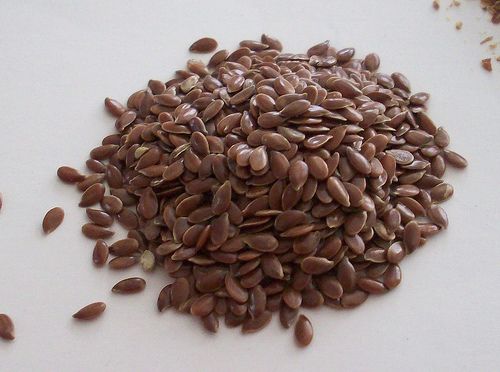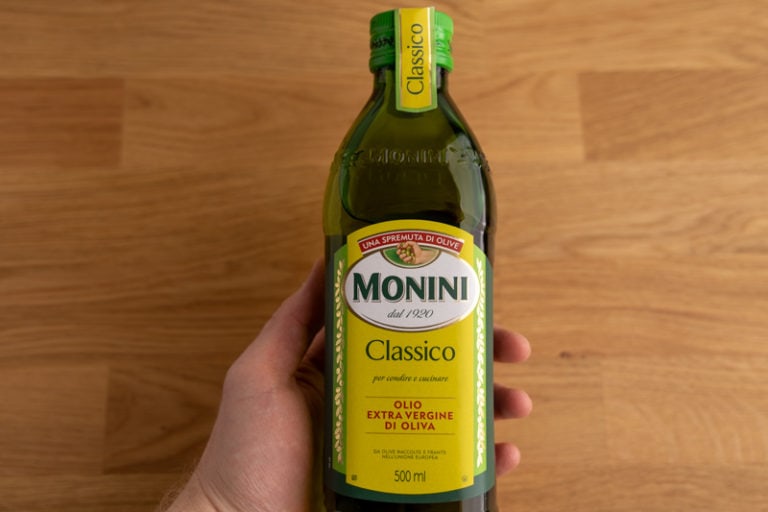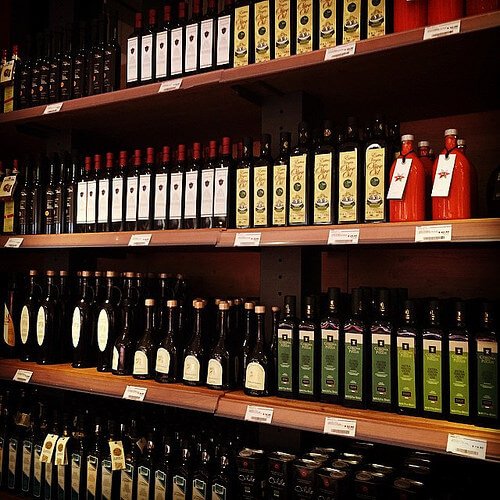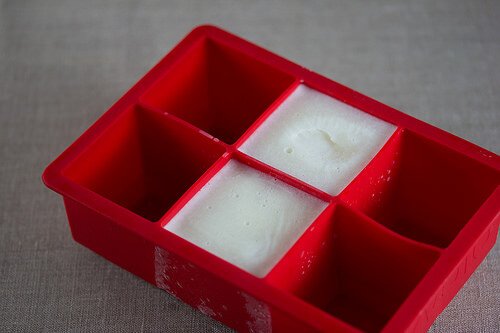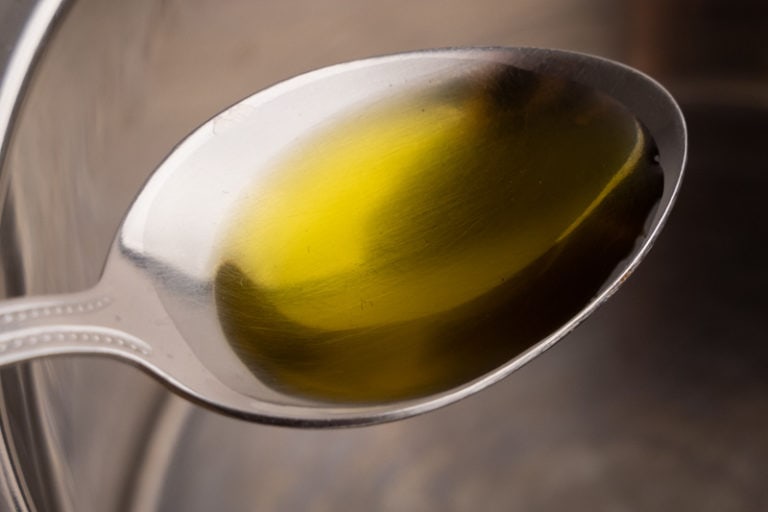Does Lard Go Bad? How Long Does It Last?
Here’s everything you need to know about lard. In this article, you will learn if it ever goes bad, how long it lasts, and if you should refrigerate it.
Got an out-of-date container of lard, and not sure if you can still use it? Does lard go bad?
Or maybe you read somewhere that you should refrigerate lard, but you found yours outside the refrigerated section. Or the other way around. And you’re wondering what’s the deal with that.
Sounds like you?
If so, this article is for you. Read on.
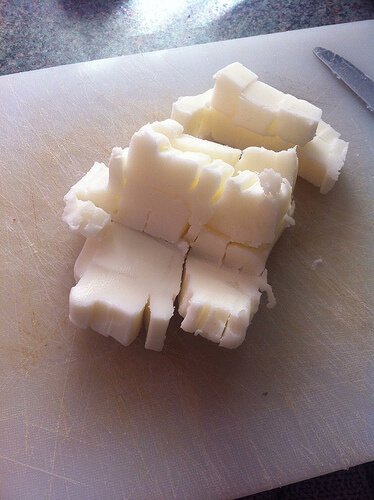
Does Lard Go Bad?
While lard lasts between 6 months and even a year, it definitely can go bad. Like other fats, it turns rancid over time, and at some point, it’s not good enough to use anymore.
Compared to alternatives like butter or margarine (lard is also used as a spread the same way), lard lasts quite a while, similarly to bacon grease or ghee (here’s how long ghee lasts).
One thing you need to remember is that the taste and smell of lard depend on the type you have.
Regular lard should remind you of pork meat (the same way bacon grease reminds you of bacon), while leaf lard is much more neutral in flavor and has a faint smell. It’s also typically less processed than regular lard.
(That’s why you buy leaf lard or one that’s labeled “for baking” to make that pie crust light and flaky but not smell like a hog.)
Now, let’s say you want to learn if your “expired” lard is still any good, but you don’t quite know how to go about it. It’s time to talk about how to tell if it’s spoiled.
Signs of Spoilage
Your lard has gone bad if:
- It smells rancid. If it reminds you of old paint or a detergent, your lard is rancid (here’s what does rancid oil smell like). And while eating or using it probably won’t make you sick (right away), it’s best to get rid of it. Plus, it stinks and most likely tastes off, so it’s no good anyway.
- It has an unusual smell. If you’ve already used this fat a couple of times to fry food, it might start giving off a funky smell. That’s a sure sign it’s time to discard it.
- There’s mold or any other “nasty” stuff. While mold isn’t the usual spoilage sign for fats, your lard is no good if it shows up. Mold and any other changes on the surface are most likely to happen to lard that hasn’t been properly filtered after usage.
- It tastes bad. If your lard looks and smells okay, it’s time to check the flavor. If it tastes sour or soapy, it’s most likely rancid. If it doesn’t taste the way it’s supposed to (keep in mind the differences between regular and leaf lard), assume it’s no good and discard it.
(These also apply to other fat-based products. Knowing these, you also know how to tell if Crisco is bad.)
Last but not least, if you’re not 100 percent sure your lard is safe to use, err on the side of caution. Better safe than sorry.
Now that you know how to tell if your lard is bad, you might be wondering if you can reuse it. And if so, how many times and how to go about it. Let’s tackle that.
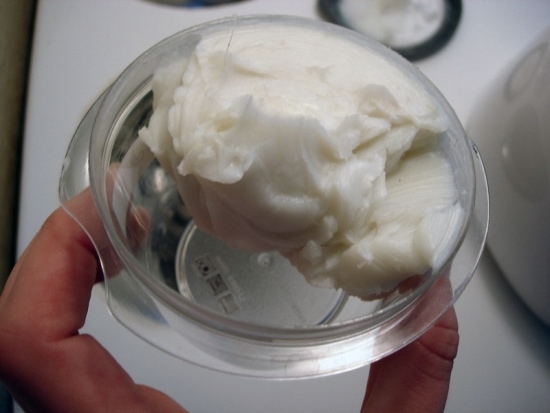
Can You Reuse Lard?
You can reuse lard if you filter it properly after use. Unfortunately, there isn’t a set number of times you can do that. Instead, you need to pay attention to the quality of the fat and take into account how it was used.
Here’s what affects how many times you can reuse lard:
- temperature – the hotter the fat, the quicker it deteriorates
- cooking time – the longer it is on a hot pan, the fewer times you will get
- what you’re cooking – plain veggies don’t use the fat nearly as much as coated meat does
- how old the lard is – if you have only used it once, but it has sat in the fridge for months already, it might not be good enough to reuse
Plus, sometimes, you might not want to reuse the lard at all (e.g., after frying fish).
To reuse lard:
- Wait until it’s no longer hot but is still warm enough so that it’s liquid.
- Grab a clean container and strain the fat through a cheesecloth.
- Make sure what ends up in the container is pure liquid, without any food particles.
- Take a close look at it and give it a whiff. Make sure it’s good enough to reuse.
- Let it cool.
- Put it back in storage.
Last but not least, check its quality before you reuse it.
How Long Does Lard Last?
| Pantry | Fridge | |
|---|---|---|
| Lard (unopened or opened) | Best-by | Best-by + 3 – 6 months |
Lard retains quality for about six months at room temperature and a year in the fridge, no matter when you open it. All sticks and containers come with best-by dates and easily last past them, especially if you refrigerate them.
That’s quite a long period. That’s because lard consists mostly of saturated and monounsaturated fats, which hold longer than polyunsaturated fats.
Of course, various brands have different recommendations. For instance, Laru recommend 7 months for their lard, and Fatworks inform their lard lasts 12 to 18 months in the fridge.
If you keep lard refrigerated, it will retain quality much longer than if you keep it on the counter (more on that later).
All the above is true for “pure” lard, that is, the fat itself. You can also find greaves lard or lard with bacon bits, and those products will usually have a much shorter shelf life, like a couple of weeks.
(Greaves lard is a popular spread in Germany, where it’s called “Griebenschmalz.”)
Now, let’s say your lard is out-of-date, and you’re wondering how long past the “expiration” date you can use it. Let’s talk about that.
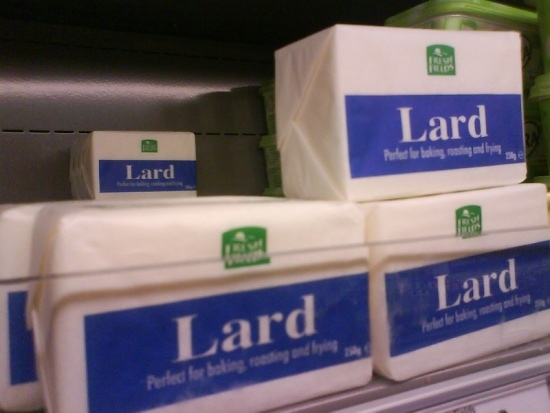
Expired Lard
Pure lard should retain decent quality for at least a couple of weeks past the printed date, if not more, especially if you store it in the fridge.
Lard-based products, such as greaves lard, usually have a much shorter shelf life, and therefore keep for only an extra week or so.
Of course, those are only estimates, and you have to judge for yourself if your out-of-date lard is still fine to use.
To do that, start by checking the suggested total storage time for yours. You can usually calculate it using the best-by and production dates. Then, check how out-of-date your lard is.
If the suggested storage time is one year, and you’re 3 weeks off, you’re probably a-okay. But if that period is only 4 months and yours is 2 months off, I wouldn’t be so sure. Again, you need to judge that for yourself.
If you’re comfortable with how out-of-date your lard is, go through the signs of spoilage I outlined earlier. If it shows any, it’s obviously no good. Otherwise, you’re good.
(The same process works for many other fat-based products. Case in point: margarine, which I cover in my article that answers the question “does margarine expire?“.)
Does Lard Need to be Refrigerated?
While it’s not necessary to refrigerate lard, it’s not a bad idea to do so. Refrigeration helps it retain quality for longer, and most brands recommend keeping their product in the fridge to last longer.
Some brands even inform about a different shelf life depending on whether you keep the lard in the refrigerator or not. Because of that, it’s always a good idea to read the label.
In other words, even though it’s not a must to refrigerate lard, you will be much better off if you do so. Plus, if you’re like me, you might not be comfortable leaving it on the counter. All the more reason why you should keep it in the fridge.
(The same rules apply to bacon fat. You don’t have to refrigerate bacon grease, but it’s worth at least considering.)
Now, if it is not pure lard but a lard-related product like greaves lard, refrigeration is pretty much a must.
Having that out of the way, let’s talk about other storage practices you should follow so that your lard lasts as long as possible.
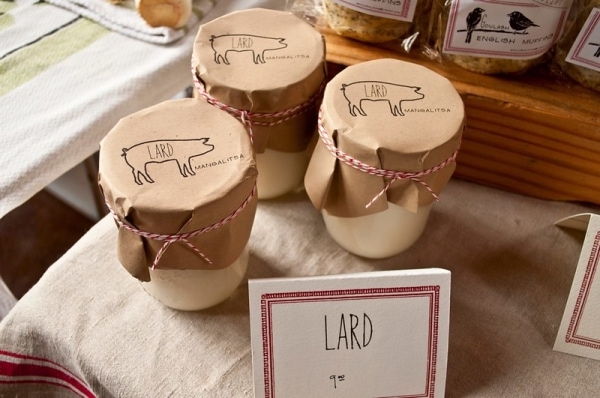
Other Storage Practices
Here’s what you should remember when storing lard:
- Always use clean utensils for scooping. Double-dipping is not a good idea.
- Keep it sealed tight when not in use. If you can’t reseal it, use a freezer bag.
- Keep lard that you want to reuse separately. Don’t mix used lard with one that’s fresh.
- If you want it to retain quality for as long as possible, always keep it refrigerated.
Last but not least, let’s talk about freezing.
Can You Freeze Lard?
Lard has a long shelf life, but if you want to store it even longer, you can freeze it. All you need to do is place the stick or container in a freezer bag, squeeze out excess air, and place it in the freezer.
(Do you freeze butter? If so, lard is quite similar.)
If you only need a small amount at a time, consider freezing lard in small portions. This way, you can defrost that portion instead of cutting frozen lard or defrosting the whole thing.
Of course, you can refreeze lard that was frozen and defrosted in the refrigerator, but that might negatively affect its quality, so it’s better to avoid it.
To freeze lard in portions, you can use an ice cube tray. After the cubes harden in the freezer, transfer them into a freezer bag and put it right back in.
If the fat is too firm to transfer to cubes, leave it for an hour or so on the counter so it softens up a bit.
To thaw frozen lard, you can do this either in the fridge or use the frozen fat right away if you need to melt it anyway.
When it comes to how long it lasts after defrosting, there aren’t any set rules. The sooner you finish it, the better.
Rotten Records: Share Your Snap!
Caught some food past its prime? Upload your photo to “Rotten Records” and help others spot the signs of spoilage. Every image makes our food community safer and more informed!
![Does Coconut Oil Go Bad? [Shelf Life and Expiration]](https://www.doesitgobad.com/wp-content/uploads/Coconut-oil-jar-in-hand-768x512.jpg)
